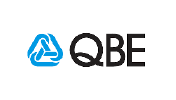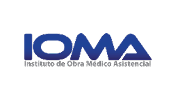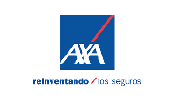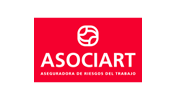The cash flow statement (CFS) measures how well a company generates cash to pay its debt obligations, fund its operating expenses, and fund investments. Financial statement analysis is the process of analyzing a company’s financial statements for decision-making purposes. External stakeholders use it to understand the overall health of an organization and to evaluate financial performance and business value. Financial position is the current balances of the recorded assets, liabilities, and equity of an organization. This information is recorded in the balance sheet, which is one of the financial statements.
It demonstrates an organization’s ability to operate in the short and long term, based on how much cash is flowing into and out of it. Balance sheets allow the user to get an at-a-glance view of the assets and liabilities of the company. Employees usually prefer knowing their jobs are secure and that the company they are working for is in good health. Financial ratios help you make sense of the numbers presented in financial statements, and are powerful tools for determining the overall financial health of your company.
Example of a Cash Flow Statement
The cash flow statement provides an overview of the company’s cash flows from operating activities, investing activities, and financing activities. Net income is carried over to the cash flow statement, where it is included as the top line item for operating activities. Like its title, investing activities include cash flows involved with firm-wide investments.
- A company’s debt level might be fine for one investor while another might have concerns about the level of debt for the company.
- Knowledge of your company’s financial health can also benefit you as an employee.
- The rules used by U.S. companies is called Generally Accepted Accounting Principles, while the rules often used by international companies is International Financial Reporting Standards (IFRS).
- Similarly, if you plan to attract investors or seek financing, you need to speak to your business’s financial health.
- The current ratio—which is total current assets divided by total current liabilities—is commonly used by analysts to assess the ability of a company to meet its short-term obligations.
It forms part of an organization’s financial statements and provides useful insight to the users about the company’s financial health. The statement is to be prepared as per the accounting standards applicable to the company based on their jurisdiction. A statement of financial position is another name for your company’s balance sheet. It reveals what your firm owns (assets), how much it owes (liabilities), and the value that would be returned to the investors if your business was liquidated (equity). Public companies, on the other hand, are required to obtain external audits by public accountants, and must also ensure that their books are kept to a much higher standard.
What Are Financial Statements?
Without that understanding, it can be all too easy to chase projects with no clearly defined return on investment or initiatives that don’t contribute to the wellbeing of your company. From there, gross profit is impacted by other operating expenses and income, depending on the nature of the business, to reach net income at the bottom — “the bottom line” for the business. As you see in the above example, we do a thorough analysis of the income statement by seeing each line item as a proportion of revenue. With this method of analysis, we will look up and down the income statement (hence, “vertical” analysis) to see how every line item compares to revenue, as a percentage. In the example below, ExxonMobil has over $2 billion of net unrecognized income. Instead of reporting just $23.5 billion of net income, ExxonMobil reports nearly $26 billion of total income when considering other comprehensive income.
What Are the Responsibilities of an Accountant?
The course includes a hands-on case study and Excel templates that can be used to calculate individual ratios and a pyramid of ratios from any set of financial statements. With the income statement and balance sheet under our belt, let’s look at the cash flow statement and all the insights it tells us about the business. Most often, analysts will use three main techniques for analyzing a company’s financial statements.
Notes to financial statements are considered an integral part of the financial statements. Important ratios that use information from a balance sheet can be categorized as liquidity ratios, solvency ratios, financial strength ratios, and activity ratios. Liquidity and solvency ratios show how well a company can pay off its debts and obligations with existing assets.
Just as managerial accounting helps businesses make decisions about management, cost accounting helps businesses make decisions about costing. Essentially, cost accounting considers all of the costs related to producing a product. Analysts, managers, business owners, and accountants use this information to determine what their products should cost.
You can also find detailed discussions of operations for the year, and a full analysis of the industry and marketplace. In this example, Apple’s total assets of $323.8 billion is segregated towards the top of the report. This asset section is broken into current assets and non-current assets, and each of these categories is broken into more specific accounts. A brief review of Apple’s assets shows that their cash on hand decreased, yet their non-current assets increased. That’s because a company has to pay for all the things it owns (assets) by either borrowing money (taking on liabilities) or taking it from investors (issuing shareholder equity).
A liability is any money that a company owes to outside parties, from bills it has to pay to suppliers to interest on bonds issued to creditors to rent, utilities and salaries. Current liabilities are due within one year and are listed in order of their due date. Consider the IBM Data Analyst Professional Certificate to sharpen your data analysis skills or Yale University’s Financial Markets course to improve your understanding of finance. These four largest accounting firms conduct audit, consulting, tax advisory, and other services. These firms, along with many other smaller firms, comprise the public accounting realm that generally advises financial and tax accounting. Accountants may be tasked with recording specific transactions or working with specific sets of information.
Analyzing a Balance Sheet with Ratios
Below is a portion of ExxonMobil Corporation’s income statement for fiscal year 2021, reported as of Dec. 31, 2021. Expenses that are linked to secondary activities include interest paid on loans or debt. Operating revenue is the revenue earned by selling a company’s products or services.
The market-to-book multiple, while it does have shortcomings, remains a crucial tool for value investors. Extensive academic evidence shows that companies with low market-to-book stocks perform better than those with high multiples. This makes sense since a low market-to-book multiple shows that the company has a strong financial position in relation to its breaking your femur at rileys is potentially fatal price tag. If you borrow money from a bank, you have to list the value of all of your significant assets, as well as all of your significant liabilities. Your bank uses this information to assess the strength of your financial position; it looks at the quality of the assets, such as your car and your house, and places a conservative valuation upon them.
Non-Current Assets and Liabilities
This balance sheet also reports Apple’s liabilities and equity, each with its own section in the lower half of the report. The liabilities section is broken out similarly as the assets section, with current liabilities and non-current liabilities reporting balances by account. The total shareholder’s equity section reports common stock value, retained earnings, and accumulated other comprehensive income. Apple’s total liabilities increased, total equity decreased, and the combination of the two reconcile to the company’s total assets. Financial accounting refers to the processes used to generate interim and annual financial statements. The results of all financial transactions that occur during an accounting period are summarized in the balance sheet, income statement, and cash flow statement.














